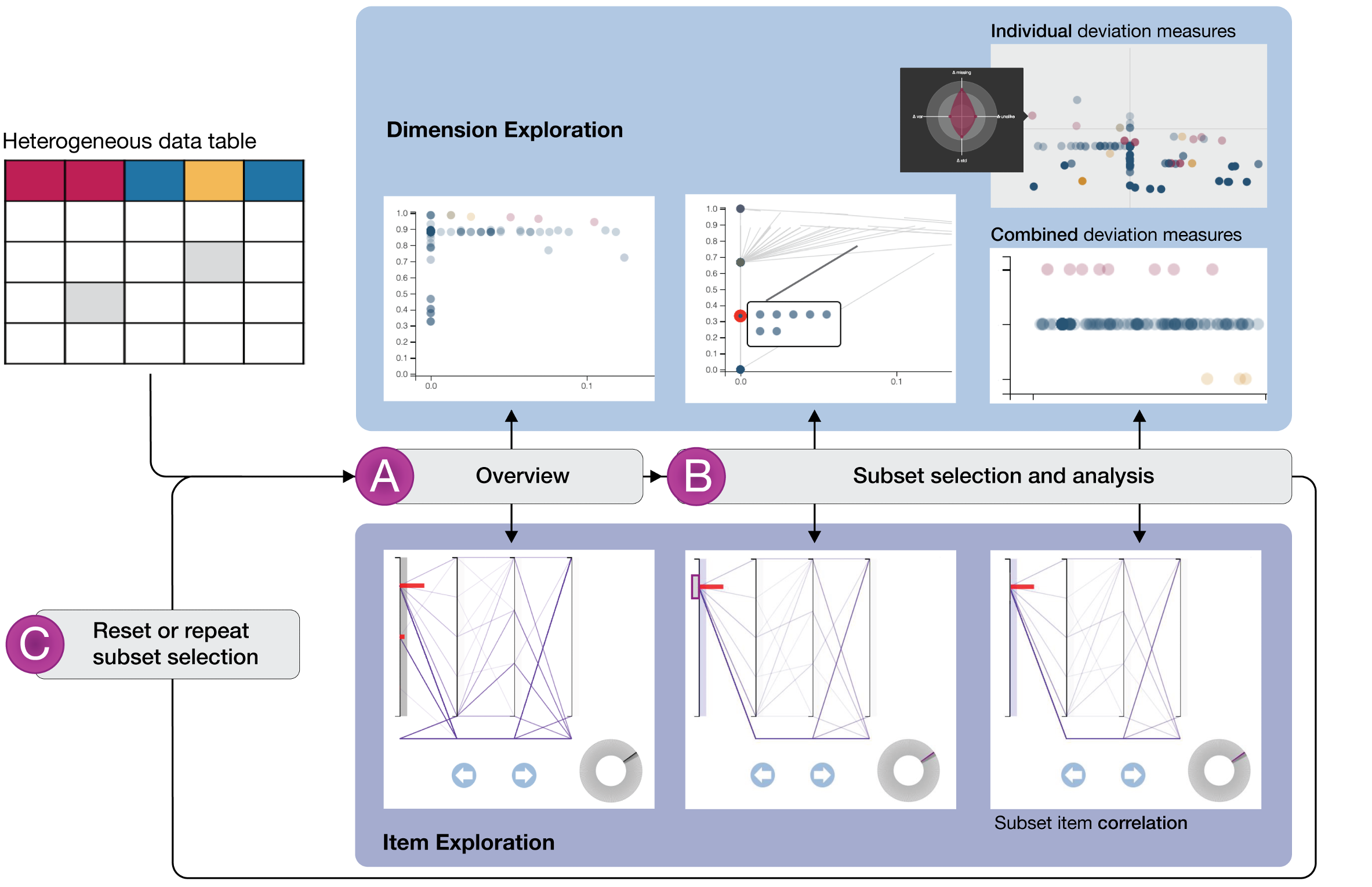Integrated Dual Analysis of Quantitative and Qualitative High-Dimensional Data
Juliane Müller, Laura Garrison, Philipp Ulbrich, Stefanie Schreiber, Stefan Bruckner, Helwig Hauser, Steffen Oeltze-Jafra
External link (DOI)
View presentation:2021-10-27T17:15:00ZGMT-0600Change your timezone on the schedule page
2021-10-27T17:15:00Z

Fast forward
Direct link to video on YouTube: https://youtu.be/rxIeRpwFKqM
Keywords
Dual Analysis approach, High-dimensional data, Mixed data, Mixed statistical analysis
Abstract
The Dual Analysis framework is a powerful enabling technology for the exploration of high dimensional quantitative data by treating data dimensions as first-class objects that can be explored in tandem with data values. In this work, we extend the Dual Analysis framework through the joint treatment of quantitative (numerical) and qualitative (categorical) dimensions. Computing common measures for all dimensions allows us to visualize both quantitative and qualitative dimensions in the same view. This enables a natural joint treatment of mixed data during interactive visual exploration and analysis. Several measures of variation for nominal qualitative data can also be applied to ordinal qualitative and quantitative data. For example, instead of measuring variability from a mean or median, other measures assess inter-data variation or average variation from a mode. In this work, we demonstrate how these measures can be integrated into the Dual Analysis framework to explore and generate hypotheses about high-dimensional mixed data. A medical case study using clinical routine data of patients suffering from Cerebral Small Vessel Disease (CSVD), conducted with a senior neurologist and a medical student, shows that a joint Dual Analysis approach for quantitative and qualitative data can rapidly lead to new insights based on which new hypotheses may be generated.